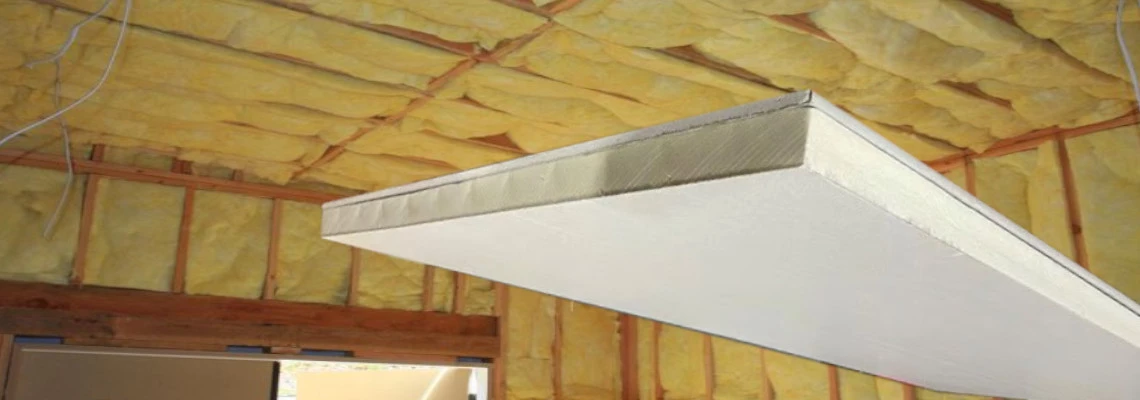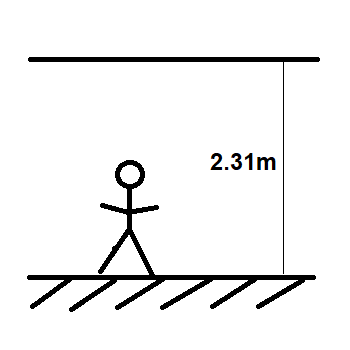
CAN I USE INSULATED PLASTERBOARD FOR CEILING INSULATION?
Plasterboard is an excellent solution that allows for quick coverage of a large surface area. It serves as an acoustic barrier while also acting as a finishing element for the ceiling. By combining thermal insulation with plasterboard, we can achieve both insulation and finishing. In this article, you will learn whether you can use insulated plasterboard for the ceiling, its advantages, disadvantages, and most commonly used thicknesses, as well as whether it is worth it.
OVERBOARDING CEILING WITH INSULATED PLASTERBOARD
Insulated plasterboard is a true game changer for overboarding ceilings. It minimizes labor costs, reduces renovation time by at least 60%, and most importantly, improves thermal insulation properties.
Here are a few examples when overboarding with insulated plasterboard takes its place:
- When there is existing old plaster that is difficult to remove
- When renovating an entire house
- When additional soundproofing of the ceiling is needed
- When insulating a floor separating rooms
CAN I PUT INSULATED PLASTERBOARD ON A CEILING?
The use of compact products like insulated plasterboard is becoming increasingly popular due to its easy installation and excellent thermal insulation properties. However, it is not always possible to use insulated plasterboard on the ceiling. The regulations clearly state that a U-value of 0.28 W/mK must be achieved. It turns out that only the thickness of 62.5mm meets this required threshold. Manufacturers such as Xtratherm with their XT/TL as well as Kingspan with their K118 product, offer this thickness. However, it is not always feasible to use such thickness due to the necessary reduction in ceiling height, which in turn requires a minimum room height of 2300mm. The national standard sets a minimum requirement of 2.3m for the floor-to-ceiling height in at least 75% of the total internal area. Beyond this, the London Plan specifies a minimum ceiling height of 2.5m.
Therefore, it should be remembered that a height of 2.3m is an absolute minimum to be maintained when installing insulated plasterboard on the ceiling. It may not always be possible to achieve this. If there is a difference of a few centimeters, it would require a complete change in technology and insulation of the ceiling between the floor joists.
So, when deciding to overboard the ceiling with insulated plasterboard, measure the height of the room and check if your room meets the minimum height requirement, which is 2.94m.
2.94m (net height) - 0.625m (minimum insulated plasterboard) = 2.31m
If your room has a minimum height of 2.94m before installation, you can consider installing insulated plasterboard. This will reduce your installation costs by at least half, and instead of taking two days, you will be able to overboard the ceiling in just 8 working hours, ready for plastering and painting.

WHAT ARE THE MOST COMMONLY USED INSULATED PLASTERBOARDS FOR CEILINGS?
The most commonly used thicknesses for ceiling insulated plasterboards are 62.5mm, 64.5mm, 67.5mm, 69.5mm, and 112.5mm. The 64.5mm thickness is a version of insulated plasterboard with a 9.5mm gypsum board. This reduces the total weight of the board and decreases the stresses that may occur during temperature changes.
On the other hand, the 62.5mm thickness boards are often readily available in construction stores. They are heavier as they include a 12.5mm gypsum board, which significantly affects the ceiling load. However, with us you can purchase mechanical fix insulated plasterboards with a 9.5mm or 12.5mm gypsum board, depending on your needs. The most commonly used type of insulated plasterboard for ceilings is the mechanical fix version, where the insulation core is covered with an aluminum foil, as opposed to paper when they are adhered to walls using the D&D method.
There is another version of insulated plasterboard, although it is less commonly used on ceilings. This is the insulated plasterboard with a moisture-resistant gypsum board. It is often used in rooms such as kitchens, bathrooms, or laundry rooms. The most commonly chosen product in this case is the XTRATHERM XT/TL MF 67.5mm.
WHEN NOT TO INSTALL INSULATED PLASTERBOARD ON THE CEILING?
Here are a few cases when you should not install insulated plasterboard on the ceiling:
- When the installation of backed plasterboard would result in a ceiling height of less than 2.3m.
- When you want to use a thick insulation core in the insulated plasterboard, greater than 150mm. Long screws required for such thickness can directly affect the joints of the boards and lead to frequent cracking.
- When additional ventilation for the rooms is not provided. The additional insulation layer on the ceiling can significantly increase moisture levels in the rooms due to its airtightness.
- When the costs associated with purchasing insulated plasterboard outweigh the costs of individual insulation and separate plasterboard installation.
IS USING INSULATED PLASTERBOARD WORTH IT?
The use or non-use of insulated plasterboard certainly has its advantages and disadvantages. So, is it worth using insulated plasterboard? Here is a list of its pros and cons. The answer to this question is often highly individual, depending on the conditions encountered on the construction site.
ADVANTAGES OF USING INSULATED PLASTERBOARD ON THE CEILING:
- Reduces gas bills by providing better U-value.
- Provides additional soundproofing for the ceiling.
- Reduces installation costs by 60%.
- Requires less storage space on-site for products.
- Minimizes the potential for thermal bridging by ensuring insulation continuity through the board size of 2.4m x 1.2m.
- Insulated plasterboard with a PIR insulation core includes an aluminum foil, eliminating the need for a vapor control layer.
- Shortened time for cutting boards. Instead of cutting insulation between the floor joists each time, usually only one board needs to be cut at the edge of the ceiling.
DISADVANTAGES OF USING INSULATED PLASTERBOARD ON THE CEILING:
- Reduced ceiling height.
- Insulated plasterboard, as a compact product, can be expensive.
- The need for increased air exchange in the room.
- Potential for cracking of board joints when using a thicker insulation core.
- The installation of insulated plasterboard requires some additional knowledge from the installer.
- Requirement for longer screws.
- Weight.
Overall, the decision to use insulated plasterboard depends on individual circumstances, considering the specific advantages and disadvantages mentioned above.
WHAT IS THE INSULATED PLASTERBOARD R-VALUE?
The most commonly used thickness of insulated plasterboard, 62.5mm, provides an R-value of 2.30 m2K/W. In other words, the higher this value, the better the thermal insulation properties of the product. The 62.5mm thickness is therefore considered an optimal thickness.
INSULATED PLASTERBOARD PRICE
Given the wide range of applications for thermal plasterboard, it is crucial to ensure you're getting the best value, especially when working within a limited budget. If you're interested in knowing the cost of plasterboarding per square metre, the ideal price range is £9.05 per m2 and £26.09 per sheet. This estimation is based on the British Gypsum Gyproc ThermaLine Basic insulated plasterboard. At InsulationGo, we also offer other reputable brands like Kingspan, Xtratherm, and Celotex. Among our commonly stocked options, Kingspan K118 with a 50mm thickness is highly favoured.
When considering performance, insulated plasterboards can be ranked as follows, based on a thickness of 52.5mm:
Phenolic insulated plasterboard / Thermal Conductivity: 0.018 W/mK
PIR insulated plasterboard / Thermal Conductivity: 0.022 W/mk
XPS insulated plasterboard / Thermal Conductivity: 0.030 W/mk
EPS insulated plasterboard / Thermal Conductivity: 0.034 W/mk
However, when it comes to pricing, the order of insulated plasterboards changes significantly, based on a thickness of 32.5mm:
EPS insulated plasterboard / £38.03
XPS insulated plasterboard / £48.60
PIR insulated plasterboard / £57.08
Phenolic insulated plasterboard / £69.21
The most economical option would be EPS bonded to plasterboard, such as Warmline EPS Insulated Plasterboard, British Gypsum Gyproc Thermaline Basic, or Knauf EPS Thermal Laminate. Conversely, the priciest choice is phenolic insulated plasterboard, like Kingspan Kooltherm K118 or Xtratherm XT/TL Thermal Liner. These boards are currently the most effective type of rigid phenolic insulation boards available in the UK.
Related articles:
HOW TO INSTALL INSULATED PLASTERBOARD?
INSULATED PLASTERBOARD: FINDING THE SWEET SPOT FOR OPTIMAL THICKNESS
MANAGING MOISTURE: DO YOU NEED A VAPOUR BARRIER WITH INSULATED PLASTERBOARD?
INSULATION BACKED PLASTERBOARD THICKNESS
FOIL INSULATION: TO GAP OR NOT TO GAP? THAT IS THE QUESTION!










































































































